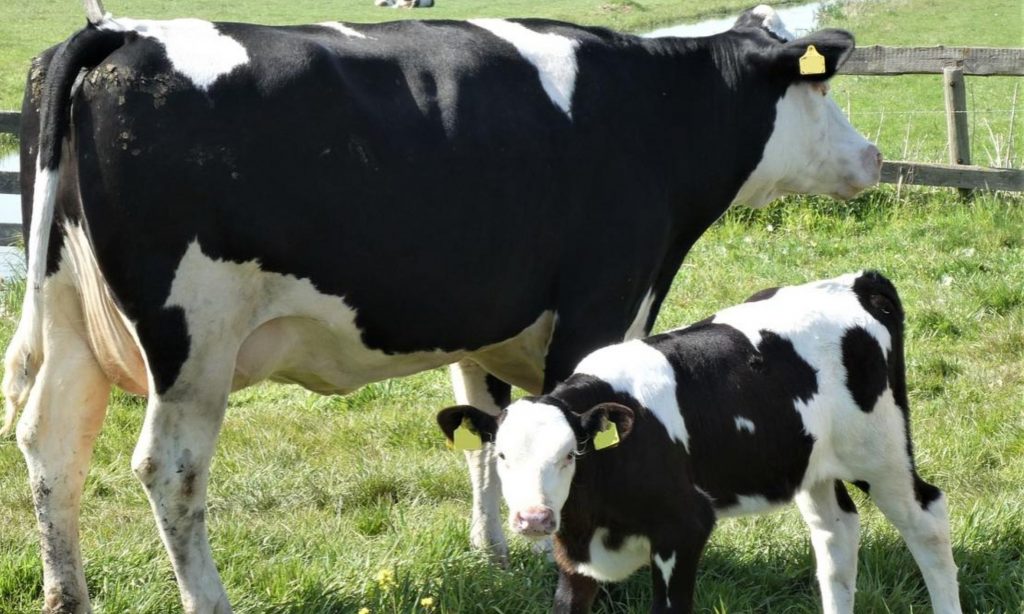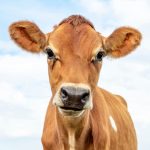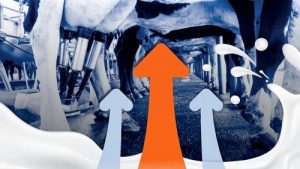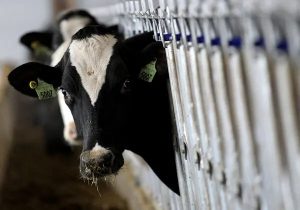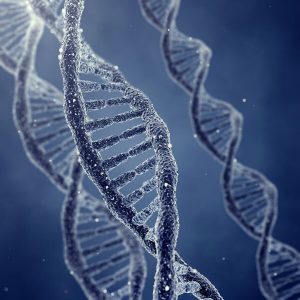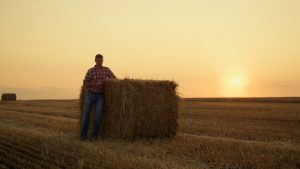
In the fall of 2020, when Chad Dechow got a call from veterinarians in New York describing a strange condition affecting Holstein calves on two farms under their care, he was unfamiliar with the condition that came to be known as calf recumbency.
The animals were weak and couldn’t stand at birth or shortly after, and most did not survive beyond six weeks of age. The vets did not detect any neurologic, infectious or metabolic abnormalities in the very young animals. It was a mystery.
“They couldn’t figure it out — they had necropsied calves that died and couldn’t find anything wrong,” said Dechow, a Penn State associate professor of dairy cattle genetics. “They contacted me because they had read an article in a popular press magazine I had written about another genetic recessive condition.”
In the fall of 2020, when Chad Dechow got a call from veterinarians in New York describing a strange condition affecting Holstein calves on two farms under their care, he was unfamiliar with the condition that came to be known as calf recumbency.
The animals were weak and couldn’t stand at birth or shortly after, and most did not survive beyond six weeks of age. The vets did not detect any neurologic, infectious or metabolic abnormalities in the very young animals. It was a mystery.
“They couldn’t figure it out — they had necropsied calves that died and couldn’t find anything wrong,” said Dechow, a Penn State associate professor of dairy cattle genetics. “They contacted me because they had read an article in a popular press magazine I had written about another genetic recessive condition.”
“What was different about this condition compared to most other known cattle genetic defects is that the mutation does not guarantee the calf will be affected,” he said. “Some animals carry two copies of the mutation and are normal. The majority, however, are not as lucky.”
The researchers traced the nearest ancestor to a common sire born in 2008 that was present for both paternal and maternal lineages of all affected calves. That sire had an influential son born in 2010 that is now one of the most highly related bulls to the Holstein breed. Subsequent research has identified a bull born in 1984 as one of the first carriers, and perhaps the progenitor, of the mutation.
Dechow published the findings in November, 2022 in JDS Communications, an official journal of the American Dairy Science Association.
After he determined the genomic region that is different, locating the specific mutation within that region was necessary to develop a DNA test to identify other animals that are carriers of the mutation. Dechow sequenced three animals with the help of a bovine genetics company — ABS Global — to identify a mutation in a gene associated with calcium channels in muscle. Mutations in this gene are known to affect skeletal muscle function in other species, including humans.
Dechow devised a simple genetic test to identify Holsteins that harbor the mutation. He and Penn State subsequently applied for a patent and have worked with three companies to date to commercialize the technology. Farmers need only to mail the lab a few strands of hair, blood or tissue to find out if the animal it came from is healthy, a carrier of the mutation or afflicted by recumbency.
For Dechow, solving a mystery through research, developing an innovative test and then working with the private sector to commercialize the technology was a fulfilling process.
“I get satisfaction from the fact that we found this fairly early on, before it really exploded into a big calf-welfare issue,” he said. “We caught this before a wave of calves were affected by recumbency and would have been euthanized. I think we nipped this condition in the bud before it became widespread. I am also really appreciative that our technology office recognized the need to commercialize the DNA test rapidly.”
DeChow expects the dairy industry to start using the test to aggressively select against bulls that carry the mutant gene.
“In fact, it’s already started happening,” he said. “As a result, in a couple years the frequency of the condition will be really low. In the long run, the lower frequency will result in the test not being needed as much, but animals that are part of the artificial insemination industry will still be tested to make sure no hidden carriers are missed.”
Contributing to the research were Fiona Maunsell, Department of Large Animal Clinical Sciences, College of Veterinary Medicine, University of Florida, and Elisha Frye, Department of Population Medicine, College of Veterinary Medicine, Cornell University,
This research was supported by the U.S. Department of Agriculture’s National Institute of Food and Agriculture.

